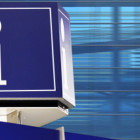The working capital optimization process is a critical challenge for the modern enterprise. This is no surprise as the working capital management workflow involves a delicate balance between holding onto cash as long as possible to improve days payable outstanding (DPO) and paying suppliers as agreed to contractually while also keeping them happy (at least the strategic ones). Focusing on one to the exclusion of the other can result in negative consequences, such as decreasing free cash for operations or late payment penalties and impugned relations with suppliers.
Much like commercial cards, virtual payment cards offer clear advantages to buying organizations in terms of reduced exception processing, fraud prevention, and often greater spend controls and improved transaction detail for reconciliation and reporting. As it relates to working capital management, virtual cards operate the same way as commercial cards. This is important because it means that using a virtual card for their purchases grants enterprises the boon of float.
How Payment Works with Virtual Cards
Chances are you already know how a credit card works. Payment is made at the point of sale or at the point of invoice approval. The funds reach the supplier’s account in a matter of days, which can shrink the supplier’s days sales outstanding (DSO), and payment is completed. This is the same way other commercial cards operate, which results in—ostensibly—reducing the buying organization’s DPO at the same time.
A virtual card attached to a charge account proceeds through this same workflow. Payment is made to the supplier through the card network, and the supplier receives payment in a matter of days instead of weeks. And, like a commercial card, the buying organization has paid the supplier sooner, which on its face appears to decrease DPO. So if DPO is reduced, this isn’t really a working capital optimization strategy is it? That’s where your thinking would be wrong.
The Float: How Virtual Cards Optimize Working Capital
It’s true that suppliers are paid immediately when buyers use a virtual payment card or commercial card. While this appears to shrink DPO to a few days, what’s really happening is the buying organization gains an extra 30 days or so to fully settle the debt. Charging invoices using a virtual account thus allows suppliers to receive payment almost immediately, while allowing buying organizations the chance to leverage that cash for an extra few weeks before the bill must be settled. Using a virtual account—or commercial card—also allows for the buying organization to reduce the number of bills requiring payment at any one time, which is yet another advantage that virtual cards have over other electronic payment methods.
Final Thoughts
Virtual payment cards offer several benefits to accounts payable teams, not least of which is the ability to extend days payable outstanding (DPO) while also paying suppliers faster than the terms specified in the supplier contract. This is in addition to the other benefits of virtual cards: reduced exception processing, reduced fraud, and improved transaction detail. In this way, virtual cards can offer significant benefit to enterprises looking to move into electronic payments.
Want more news on B2B payments and other financial operations topics? Sign up for the Ardent Partners email newsletter today.



